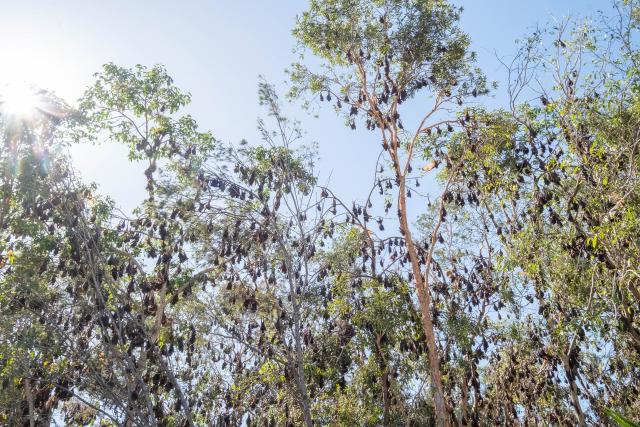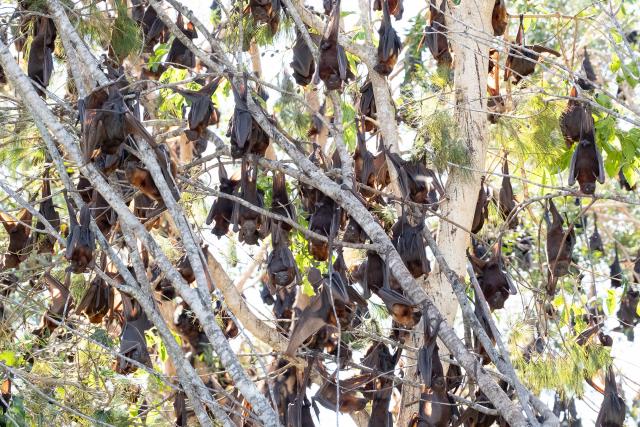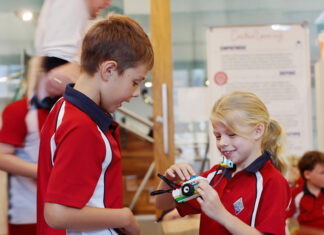As the seasonal influx of little red flying foxes approaches Noosa Council has approved a new flying-fox management plan that uses a set of stages instead of a measure of conflict, to guide its management, while assisting with the impact on residents is under review and long term strategies ongoing.
Presented to Council by the Fauna Management project officer this month the Flying-fox Statement of Management Intent (SoMI) sets out Council’s approach to flying-fox management within the Shire, providing guidance to staff, contractors and private landholders.
The SoMI follows the state government’s devolvement of management to councils and funding for local government for SoMIs as part of the transition.
Flying foxes are protected under the Nature Conservation Act 1992 (NCA), and grey-headed flying- foxes are also protected under the Commonwealth Environment Protection and Biodiversity Conservation Act 1999 (EPBC Act 1999). The Queensland Government has developed Codes of Practice to guide local governments in their management of flying-fox roosts.
After Noosa Council’s draft SoMI was endorsed in August 2022, the document was put out to consultation from September 2022 to May 2023 which included community surveys through Your Say Noosa, and the application of the SoMI to high conflict flying-fox roosts at Wallace Park, Noosaville, Keys Creek, Kin Kin, and Waratah Reserve, Tewantin.
“That was productive,” staff said at Council’s Planning and Environment meeting.
“The main feedback was that originally we used the level of conflict to guide council through management – set at low, medium, high.
“The issue with having conflict as the main guide was it is very subjective. It’s different for different people living next to a flying fox colony and roosts move around and can affect different residents at different times.
“It wasn’t a suitable trigger. Now If a roost has some level of contact we go through a stage management approach.
“It applies equity between roosts. The response can range from monitoring a roost to creating management plans. We can jump through stages if we have a large influx.
“We have 10 active roosts and that’s variable – it can change overnight. About eight of those have some level of human contact,” staff said.
“We can have small and large roosts that cause high conflict.”
Flying fox management about building education across the community, informing where they fit in with our urban community and building tolerance with living with flying foxes where there is no other option, staff said.
Noosa has permanent flying fox populations of two species – grey-headed and black-headed flying foxes. Then from November to April the shire anticipates the arrival of little red flying foxes.
“When they arrive it can have greater impact because of the numbers. It’s not uncommon to see 50,000-400,000 influx. We’ve had major influxes at Wallace park. We had an influx at Waratah reserve this year,” staff said.
In addition to the SoMI council officers have generated site specific management plans for roosts at Wallace Park, Waratah Reserve, Keys creek, Kin Kin, and Cooroy next to aged care facility.
“Looking at site-based management options we need to have site management plans,” staff said.
In addition to the SoMI Council’s environmental services aim to undertake a review of subsidy plan, which Council also endorsed, after resident feedback was that it did not supply enough for some residents.
“Noosa one of three councils across SEQ that has a subsidy plan, but it’s probably time to review it,” staff said.
Cr Brian Stockwell asked if there were long-term strategies in the pipeline after years spent on management methods based on reacting to flying-fox influxes.
“The little reds come here for bloodwoods. Do we try and attract them away from urban areas and establish alternative roosting areas,” he asked.
Staff said Noosa Council was part of SEQ regional flying fox project that involved mapping roosts, tracking flying-fox movements and creating planting guides for local governments to attract or not attract flying-foxes.
Cr Amelia Lorentson raised the issue of roost dispersal, the high cost of attempting to disperse a roost and its low success rate, as documented in a CSIRO report and asked if residents could be provided with scientific information on the issue.
Staff said the information had not been provided shire-wide but it had been given to residents impacted by roosts.
“We’ve had lot of residents chasing dispersal but when we presented case studies we saw a shift in people’s attitudes,” staff said.
“Last dispersal conducted locally was in Sunshine Coast Council region and resulted in a split roost that created two roosts and two problems. We don’t have the science to do this.”
Cr Karen Finzel asked how Council was supporting people to relieve mental health issues for those having to live with a roost on daily basis?
“It’s a tricky one,” staff said. “The subsidy program doesn’t have all answers. We have sought increases from the state government including money to relieve mental health issues. We had Queensland Health reps at Waratah Reserve.
“They supplied a doctor who talked to the health risks regarding flying foxes. The support is there but it’s very challenging for people to live there in some cases. It’s dependent on the roost dynamics. Everyone’s impacted differently. It comes down to consultation and identifying what the impacts are to residents by talking to them.
“It’s something we could look at as part of regional plan.”
For more information visit noosa.qld.gov.au/environment-waste/environment/trees-plants-animals/flying-foxes









